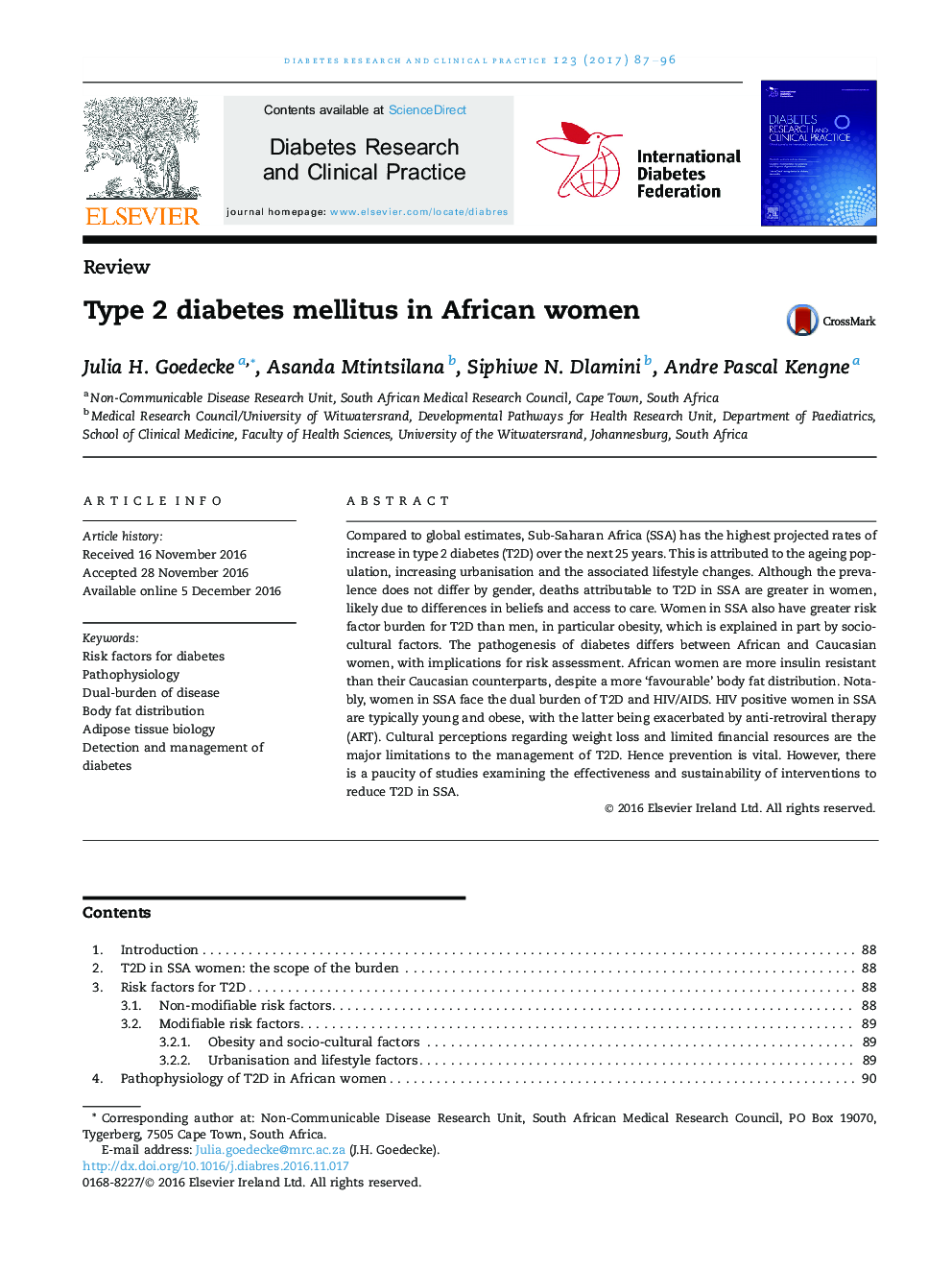| Article ID | Journal | Published Year | Pages | File Type |
|---|---|---|---|---|
| 5587428 | Diabetes Research and Clinical Practice | 2017 | 10 Pages |
Abstract
Compared to global estimates, Sub-Saharan Africa (SSA) has the highest projected rates of increase in type 2 diabetes (T2D) over the next 25Â years. This is attributed to the ageing population, increasing urbanisation and the associated lifestyle changes. Although the prevalence does not differ by gender, deaths attributable to T2D in SSA are greater in women, likely due to differences in beliefs and access to care. Women in SSA also have greater risk factor burden for T2D than men, in particular obesity, which is explained in part by sociocultural factors. The pathogenesis of diabetes differs between African and Caucasian women, with implications for risk assessment. African women are more insulin resistant than their Caucasian counterparts, despite a more 'favourable' body fat distribution. Notably, women in SSA face the dual burden of T2D and HIV/AIDS. HIV positive women in SSA are typically young and obese, with the latter being exacerbated by anti-retroviral therapy (ART). Cultural perceptions regarding weight loss and limited financial resources are the major limitations to the management of T2D. Hence prevention is vital. However, there is a paucity of studies examining the effectiveness and sustainability of interventions to reduce T2D in SSA.
Keywords
Related Topics
Life Sciences
Biochemistry, Genetics and Molecular Biology
Endocrinology
Authors
Julia H. Goedecke, Asanda Mtintsilana, Siphiwe N. Dlamini, Andre Pascal Kengne,
